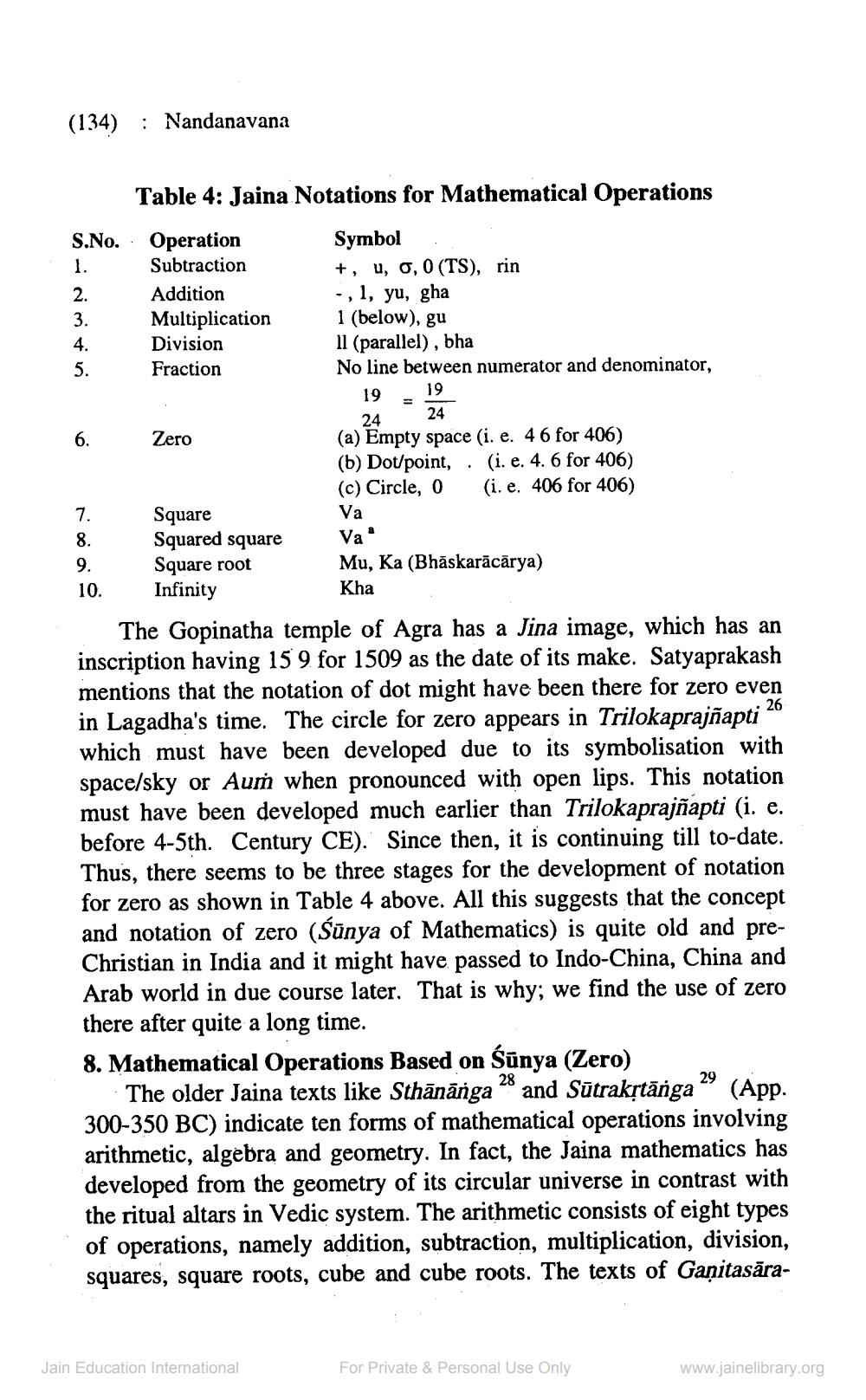________________
(134) : Nandanavana
di mit
Table 4: Jaina Notations for Mathematical Operations S.No. · Operation
Symbol Subtraction
+, u, o, O (TS), rin Addition
., 1, yu, gha Multiplication 1 (below), gu Division
Il (parallel), bha Fraction
No line between numerator and denominator,
19 19
24
24
Zero
é
(a) Empty space (i. e. 46 for 406) (b) Dot/point, . (i. e. 4.6 for 406) (c) Circle, o (i. e. 406 for 406) Va
too
Va
Square Squared square Square root Infinity
Mu, Ka (Bhāskarācārya) Kha
10.
26
The Gopinatha temple of Agra has a Jina image, which has an inscription having 15' 9. for 1509 as the date of its make. Satyaprakash mentions that the notation of dot might have been there for zero even in Lagadha's time. The circle for zero appears in Trilokaprajñapti 26 which must have been developed due to its symbolisation with space/sky or Auṁ when pronounced with open lips. This notation must have been developed much earlier than Trilokaprajñapti (i. e. before 4-5th. Century CE). Since then, it is continuing till to-date. Thus, there seems to be three stages for the development of notation for zero as shown in Table 4 above. All this suggests that the concept and notation of zero (Šūnya of Mathematics) is quite old and preChristian in India and it might have passed to Indo-China, China and Arab world in due course later. That is why; we find the use of zero there after quite a long time. 8. Mathematical Operations Based on Sūnya (Zero)
The older Jaina texts like Sthānānga 28 and Sūtrakrtānga 29 (App. 300-350 BC) indicate ten forms of mathematical operations involving arithmetic, algebra and geometry. In fact, the Jaina mathematics has developed from the geometry of its circular universe in contrast with the ritual altars in Vedic system. The arithmetic consists of eight types of operations, namely addition, subtraction, multiplication, division, squares, square roots, cube and cube roots. The texts of Ganitasāra
Jain Education International
For Private & Personal Use Only
www.jainelibrary.org




